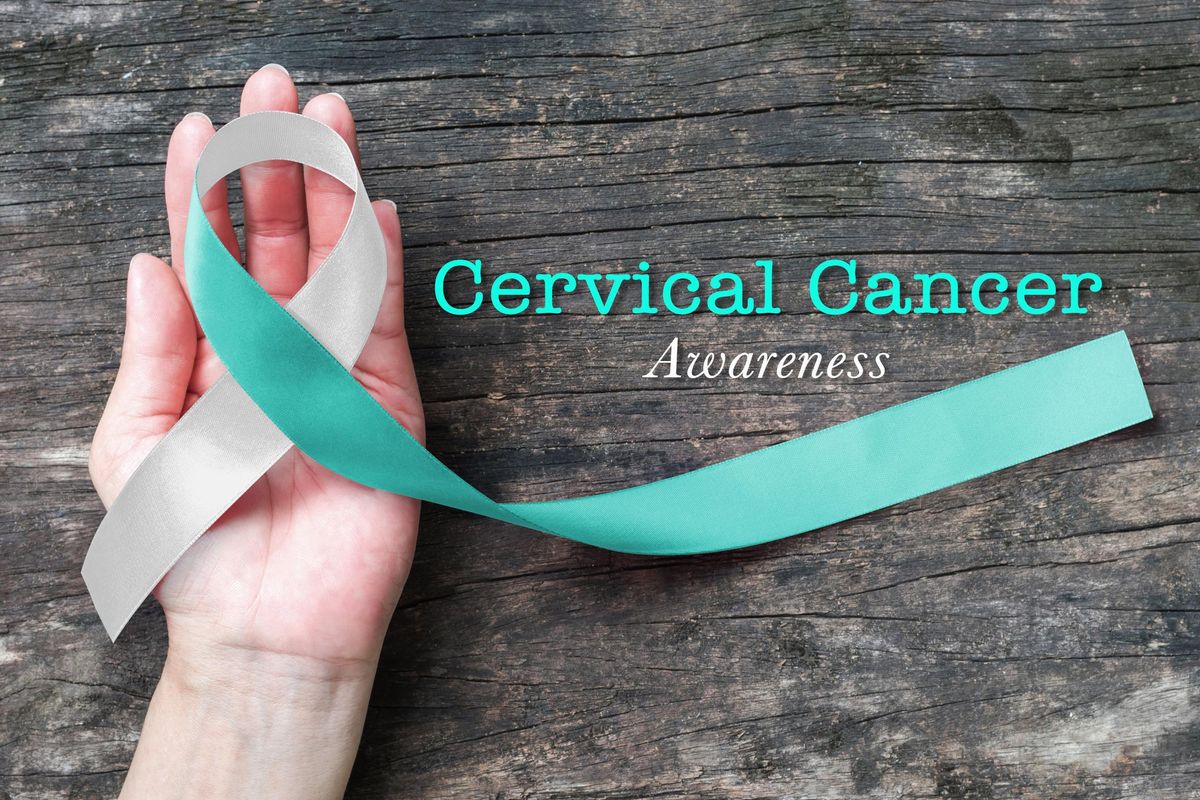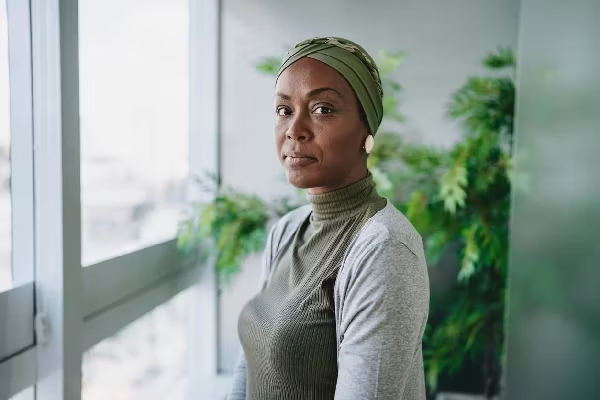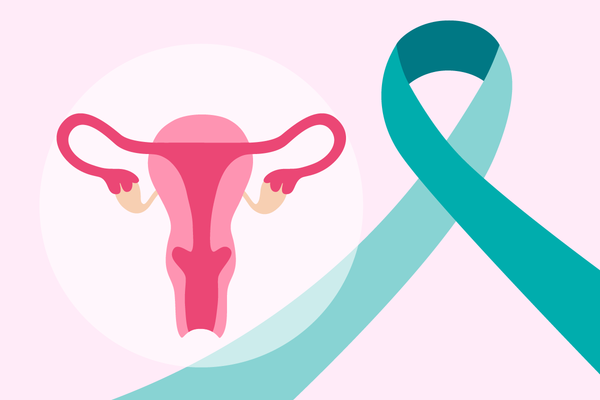January is Cervical Cancer Awareness Month.
Sheri Carpenter was in the middle of a busy waitressing shift at Dalts American Grill when she began to bleed through her uniform. The 45-year-old single mother of three was feeling tired and suspected a kidney infection, but the excessive bleeding scared her into going home. In the following days, Carpenter tried to go to work — she couldn't afford to miss a shift — but the pain was unbearable. She was rushed to the hospital three days later where she received the news: There was a tumor on her cervix that had bored a hole into her bladder. It was stage 4 cervical cancer.
"I tell everyone that cervical cancer is sneaky," Carpenter said. "Don't let it sneak up on you just because you aren't showing the signs."
Screening is key
Research shows that people with cervical cancer rarely have symptoms in the early stages. Advanced signs include abnormal vaginal bleeding (other than a period) — like Carpenter experienced — pain during sex and bleeding during or after intercourse.
Cervical cancer begins to form when healthy cells develop changes in their DNA. While it's not clear what exactly causes the cells to mutate, the human papillomavirus (HPV) — a sexually transmitted infection — plays a role in nearly all cases.
"Human papillomavirus is the virus that causes cervical cancer," said Dr. Ivy Wilkinson-Ryan, a gynecologic oncologist at Dartmouth-Hitchcock Medical Center. "This virus integrates into the genetic material of the cells in the cervix and allows those cells to build mutations in the genetic material that eventually leads to the cells becoming cancerous."
For most people, HPV clears up on its own without any symptoms or treatment, however, when it doesn't clear, HPV causes 99% of cervical cancer cases.
Regular screening with Pap tests and/or HPV tests and getting the HPV vaccine are crucial steps for preventing cervical cancer. "Depending on your history your doctor may recommend pap smears every one, three or five years and will likely recommend testing for HPV along with looking at the cells on the cervix using the [P]ap test."
Dr. DaCarla M. Albright, an associate professor of clinical obstetrics and gynecology at the University of Pennsylvania and a member of the HealthyWomen Women's Health Advisory Council, said that, in addition to routine screening, women can decrease their odds of cervical cancer by avoiding/quitting smoking and using condoms or dental dams to reduce exposure to HPV.
She also recommends talking to a gynecologist about the HPV vaccine, even in your 30s and 40s. "HPV infection is not limited to age and may not clear as quickly in patients [over the age of] 30," she said. Albright added that In 2018, HPV vaccination received expanded FDA approval to age 45, but patients over 26 may need to confirm coverage with their insurance company.
Protecting against cervical cancer
HPV is the most common sexually transmitted infection in the United States and is extremely widespread throughout the world. With an estimated 79 million people currently infected and 14 million new cases of HPV detected in the United States per year, the virus is so common the American Cancer Society notes that anyone who has sex can get HPV — even if it was just one time with one person.
While most sexually active people will be exposed to the virus at some point in their lives, the good news is that the HPV vaccine prevents the types of HPV that cause most cervical cancers. Since the vaccine was introduced in 2006, the incidence of cervical precancers has dropped by 40%.
"The bottom line is that cervical cancer is preventable," said Fred Wyand, director of communications for the National Cervical Cancer Coalition. "We have the tools to essentially eliminate cervical cancer as a public health matter; the question is do we have the will? Vaccination and screening are powerful and the issue now is to make sure vulnerable populations have access to these life-saving resources."
Ending cervical cancer for good
Worldwide, more than 311,000 women die from cervical cancer each year, and it is the fourth most common cancer among people with cervixes.
"Cervical cancer is a huge burden on women around the world and one of the primary issues is limited access to preventive vaccines and screening tests," Wilkinson-Ryan said.
In November 2020, the World Health Organization unveiled its strategy to eliminate cervical cancer worldwide by 2050. Through vaccination, screening and treatment for preinvasive and cervical cancer, the plan details a 90-70-90 approach: 90% of girls fully vaccinated with HPV vaccine by age 15; 70% of women screened with a high-performance test by 35 and again by 45; 90% of women identified with cervical disease receive treatment (90% of women with precancer treated, and 90% of women with invasive cancer managed).
WHO researchers estimate that the median cumulative number of cervical cancer deaths averted will be 300,000 by 2030 and more than 14 million by 2070.
"With patient education, increased vaccination of both sexes, encouraging screening and improving access to screening — we can most definitely prevent and drastically decrease the incidence of cervical cancer," Albright said.
The plan aims to help women prioritize their own health, which is something many women struggle to do. Carpenter said that life and excuses got in the way of her routine checkups, and she wants women to remember to put their well-being first.
"Don't make the same mistakes I made because you are scared, or tired or have no insurance," she said. "There is always a way."
Resources:
National Cervical Cancer Coalition
- I Was Told My Irregular Vaginal Bleeding Was Normal, But I Actually ... ›
- Cervical Cancer Taught Me to Talk About My Vagina - HealthyWomen ›
- 9 Warning Signs of Cervical Cancer You Shouldn't Ignore ... ›
- Get Screened: January Is Cervical Health Awareness Month ... ›
- Clinically Speaking: Questions to Ask Your Healthcare Provider About Cervical Cancer Prevention - HealthyWomen ›
- My Life-Changing Cervical Cancer Diagnosis Inspired Me to Become an Advocate for Women’s Health - HealthyWomen ›
- My Close Friend’s Cancer Diagnosis Helped Save My Life - HealthyWomen ›
- Understanding Your HPV Type and the Risks That Go With It - HealthyWomen ›




